Related Research Articles

Christianity is an Abrahamic monotheistic religion, professing that Jesus Christ was raised from the dead and is the Son of God, whose coming as the Messiah was prophesied in the Hebrew Bible and chronicled in the New Testament. It is the world's largest and most widespread religion with over 2.4 billion followers, comprising around 31.2% of the world population. Its adherents, known as Christians, are estimated to make up a majority of the population in 157 countries and territories.

The Gospel of Matthew is the first book of the New Testament of the Bible and one of the three synoptic Gospels. It tells how Israel's messiah (Christ), Jesus, comes to his people but is rejected by them and how, after his resurrection, he sends the disciples to the gentiles instead. Matthew wishes to emphasize that the Jewish tradition should not be lost in a church that was increasingly becoming gentile. The gospel reflects the struggles and conflicts between the evangelist's community and the other Jews, particularly with its sharp criticism of the scribes and Pharisees with the position that through their rejection of Christ, the Kingdom of Heaven has been taken away from them and given instead to the church.

Matthew the Apostle is named in the New Testament as one of the twelve apostles of Jesus. According to Christian traditions, he was also one of the four Evangelists as author of the Gospel of Matthew, and thus is also known as Matthew the Evangelist.

Mary of Bethany is a biblical figure mentioned by name in the Gospel of John and probably the Gospel of Luke in the Christian New Testament. Together with her siblings Lazarus and Martha, she is described as living in the village of Bethany, a small village in Judaea to the south of the Mount of Olives near Jerusalem.
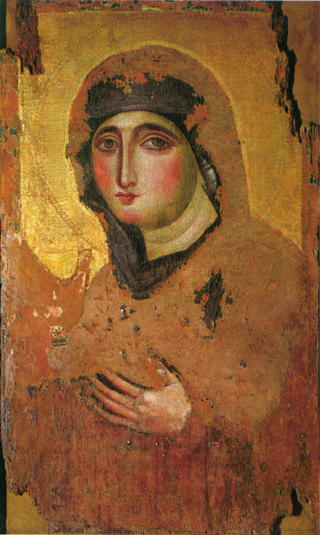
Mary was a first-century Jewish woman of Nazareth, the wife of Joseph and the mother of Jesus. She is an important figure of Christianity, venerated under various titles such as virgin or queen, many of them mentioned in the Litany of Loreto. The Eastern and Oriental Orthodox, Catholic, Anglican, and Lutheran churches believe that Mary, as mother of Jesus, is the Mother of God. The Church of the East historically regarded her as Christotokos, a term still used in Assyrian Church of the East liturgy. Other Protestant views on Mary vary, with some holding her to have lesser status. She has the highest position in Islam among all women and is mentioned numerous times in the Quran, including in a chapter named after her. She is also revered in the Baháʼí Faith and the Druze Faith.
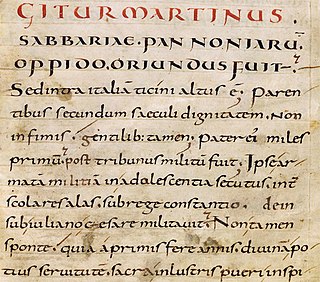
A hagiography is a biography of a saint or an ecclesiastical leader, as well as, by extension, an adulatory and idealized biography of a preacher, priest, founder, saint, monk, nun or icon in any of the world's religions. Early Christian hagiographies might consist of a biography or vita, a description of the saint's deeds or miracles, an account of the saint's martyrdom, or be a combination of these.

The Nativity or birth of JesusChrist is found in the biblical gospels of Luke and Matthew. The two accounts agree that Jesus was born in Bethlehem, in Roman-controlled Judea, that his mother, Mary, was engaged to a man named Joseph, who was descended from King David and was not his biological father, and that his birth was caused by divine intervention. Some scholars do not see the two canonical gospel Nativity stories as historically factual since they present clashing accounts and irreconcilable genealogies. The secular history of the time does not synchronize with the narratives of the birth and early childhood of Jesus in the two gospels. Some view the question of historicity as secondary, given that gospels were primarily written as theological documents rather than chronological timelines.

Mercedes College is an independent Roman Catholic co-educational primary and High day school located in the Adelaide inner-south suburb of Springfield, South Australia, Australia.
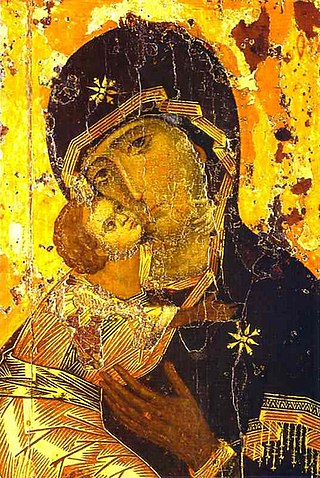
The perpetual virginity of Mary is a Christian doctrine that Mary, the mother of Jesus, was a virgin "before, during and after" the birth of Christ. In Western Christianity, the Catholic Church adheres to the doctrine, as do some Lutherans, Anglicans, Reformed, and other Protestants. In Eastern Christianity, the Oriental Orthodox Churches and the Church of the East both adhere to this doctrine as part of their ongoing tradition, and Eastern Orthodox churches recognize Mary as Aeiparthenos, meaning "ever-virgin". It is one of the four Marian dogmas of the Catholic Church. Most modern nonconformist Protestants reject the doctrine.

Jude was one of the Twelve Apostles of Jesus according to the New Testament. He is generally identified as Thaddeus and is also variously called Judas Thaddaeus, Jude Thaddaeus, Jude of James, or Lebbaeus. He is sometimes identified with Jude, the brother of Jesus, but is clearly distinguished from Judas Iscariot, the disciple who betrayed Jesus prior to his crucifixion. Catholic writer Michal Hunt suggests that Judas Thaddaeus became known as Jude after early translators of the New Testament from Greek into English sought to distinguish him from Judas Iscariot and subsequently abbreviated his forename. Most versions of the New Testament in languages other than English and French refer to Judas and Jude by the same name.

The flight into Egypt is a story recounted in the Gospel of Matthew and in New Testament apocrypha. Soon after the visit by the Magi, an angel appeared to Joseph in a dream telling him to flee to Egypt with Mary and the infant Jesus since King Herod would seek the child to kill him. The episode is frequently shown in art, as the final episode of the Nativity of Jesus in art, and was a common component in cycles of the Life of the Virgin as well as the Life of Christ. Within the narrative tradition, iconic representation of the "Rest on the Flight into Egypt" developed after the 14th century.

Religion in Australia is diverse. In the 2021 national census, 43.9% of Australians identified with Christianity and 38.9% declared "no religion".
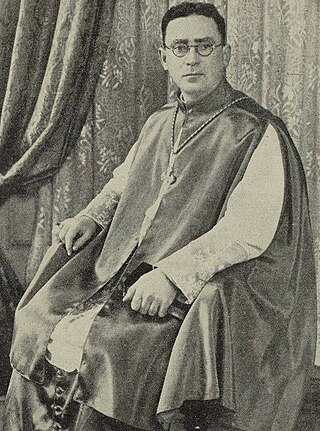
Patrick Lyons was an Australian prelate of the Catholic Church. He was the third Bishop of Christchurch, New Zealand (1944–1950), Auxiliary Bishop of Sydney, New South Wales, Australia (1950–1957) and fourth Bishop of Sale, Victoria, Australia (1957–1967).
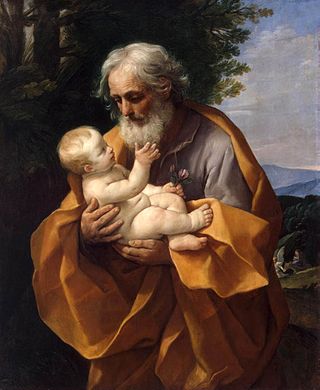
Joseph was a 1st-century Jewish man of Nazareth who, according to the canonical Gospels, was married to Mary, the mother of Jesus, and was the legal father of Jesus.
James William Gleeson was an Australian clergyman and the sixth Catholic Archbishop of Adelaide. He was the first South Australian priest to become Catholic Archbishop of Adelaide.

Matthew Beovich was an Australian Roman Catholic clergyman, and the fifth Archbishop of Adelaide.
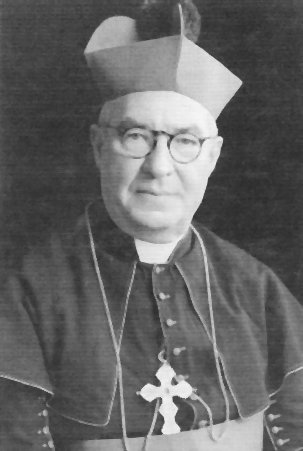
Andrew Killian was an Irish clergyman and the fourth Archbishop of Adelaide. Born and ordained in Ireland, Killian moved to Australia, where he became Bishop of Port Augusta before succeeding Robert Spence as Archbishop of Adelaide.

John O'Reily was an Australian Roman Catholic clergyman, the first Bishop of Port Augusta, and the second Archbishop of Adelaide. Born in Kilkenny, Ireland, O'Reily studied for the priesthood in Dublin. Upon his ordination in 1869, he migrated to Western Australia, serving as a parish priest in Fremantle, and founding a Catholic newspaper there. When the Diocese of Port Augusta was established in 1887, Pope Leo XIII named O'Reily as its first bishop. Concerned about the financial position of the diocese, he accepted the posting reluctantly. As bishop, he greatly improved the financial position of the new diocese, reducing its debt by half and earning a reputation as a competent administrator.

Saint Peter, also known as Peter the Apostle, Simon Peter, Simeon, Simon, or Cephas, was one of the Twelve Apostles of Jesus Christ and one of the first leaders of the early Christian Church. He appears repeatedly and prominently in all four New Testament gospels as well as the Acts of the Apostles. Catholic tradition accredits Peter as the first bishop of Rome—or pope—and also as the first bishop of Antioch.
References
- ↑ Boland, T. P. (April 2009). "Matthew Beovich: A Biography [Book Review]". The Australasian Catholic Record. 86 (2): 245–246. Retrieved 23 October 2018.
- ↑ Crotty, Robert (15 November 2010). "Matthew Beovich. A Biography - By Josephine Laffin". Journal of Religious History . 34 (4): 500–501. doi:10.1111/j.1467-9809.2010.00917.x. ISSN 0022-4227.